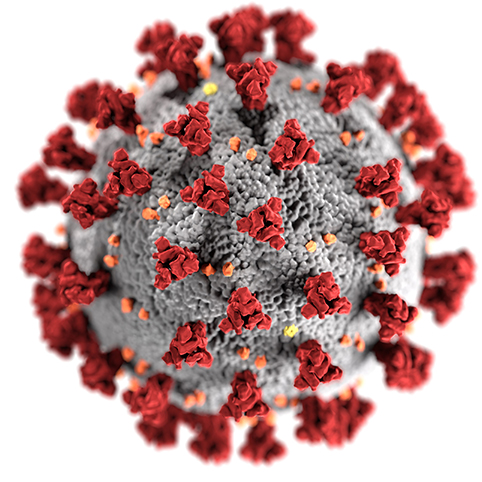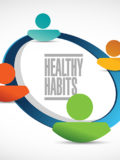
Illustration, created at the Centers for Disease Control and Prevention (CDC)
You may be hearing that Coronavirus disease is particularly affecting older adults. Who precisely is being targeted you may wonder.
What is Coronavirus Disease?
Coronavirus disease 2019 (COVID-19), the respiratory illness that was first detected in Wuhan, China, in 2019 and was characterized as a pandemic on March 13, 2020 by WHO (World Health Organization). The symptoms include fever, cough, and shortness of breath. The virus is believed to spread like the flu when an infected person coughs or sneezes.
Early information out of China, where COVID-19 first started, shows that some people are at higher risk of getting very sick from this illness. Older adults appear to be particularly vulnerable.
What is the Definition of an Older Adult?
Being considered an older adult is a subjective call. Is it 65 when Medicare benefits become available? Is it a Gen-Xer, Baby Boomer or Greatest Generation?
We turned to the Centers for Disease Control and Prevention (CDC) for the answer. Here is their response:
Starting at 60 there is an increasing risk of death and the risk increases with age. A higher risk of serious illness and death is in people older than 80 years. People with serious underlying health conditions also are more likely to develop serious outcomes, including death.
The people who will be at greatest risk is those who are older who also have a serious long-term health condition like diabetes, heart disease, or lung disease.
Underlying medical conditions that may increase the risk of serious COVID-19 for individuals of any age:
- Blood disorders (e.g., sickle cell disease or on blood thinners)
- Chronic kidney disease as defined by your doctor. Patient has been told to avoid or reduce the dose of medications because kidney disease, or is under treatment for kidney disease, including receiving dialysis
- Chronic liver disease as defined by your doctor. (e.g., cirrhosis, chronic hepatitis)
- Patient has been told to avoid or reduce the dose of medications because liver disease or is under treatment for liver disease.
- Compromised immune system (immunosuppression) (e.g., seeing a doctor for cancer and treatment such as chemotherapy or radiation, received an organ or bone marrow transplant, taking high doses of corticosteroids or other immunosuppressant medications, HIV or AIDS)
- Current or recent pregnancy in the last two weeks
- Endocrine disorders (e.g., diabetes mellitus)
- Metabolic disorders (such as inherited metabolic disorders and mitochondrial disorders)
- Heart disease (such as congenital heart disease, congestive heart failure and coronary artery disease)
- Lung disease including asthma or chronic obstructive pulmonary disease (chronic bronchitis or emphysema) or other chronic conditions associated with impaired lung function or that require home oxygen
- Neurological and neurologic and neurodevelopment conditions [including disorders of the brain, spinal cord, peripheral nerve, and muscle such as cerebral palsy, epilepsy (seizure disorders), stroke, intellectual disability, moderate to severe developmental delay, muscular dystrophy, or spinal cord injury
If you are at higher risk for serious illness from COVID-19 because of your age or because you have a serious long-term health problem, it is extra important for you to take action to reduce your risk of getting sick with the disease.
What to Do If You are At Higher Risk?
If you are at higher risk, you should:
- Take everyday precautions to keep space between yourself and others.
- When you go out in public, keep away from others who are sick, limit close contact.
- Avoid crowds as much as possible.
- Avoid cruise travel and non-essential air travel.
- During a COVID-19 outbreak in your community, stay home as much as possible to further reduce your risk of being exposed.
- Wash your hands often with soap and water for at least 20 seconds, especially after blowing your nose, coughing, or sneezing, or having been in a public place.
- If soap and water are not available, use a hand sanitizer that contains at least 60% alcohol.
- To the extent possible, avoid touching high-touch surfaces in public places – elevator buttons, door handles, handrails, handshaking with people, etc. Use a tissue or your sleeve to cover your hand or finger if you must touch something.
- Wash your hands after touching surfaces in public places.
- Avoid touching your face, nose, eyes, etc.
- Clean and disinfect your home to remove germs: practice routine cleaning of frequently touched surfaces (for example, tables, doorknobs, light switches, handles, desks, toilets, faucets, sinks & cell phones)
- Avoid crowds, especially in poorly ventilated spaces. Your risk of exposure to respiratory viruses like COVID-19 may increase in crowded, closed-in settings with little air circulation if there are people in the crowd who are sick.
- Stock up on supplies. Have enough household items and groceries on hand so that you will be prepared to stay at home for a period of time. This does not mean hoarding and panic buying. Just make a plan for what you really need.
- Contact your healthcare provider to ask about obtaining extra necessary medications to have on hand in case there is an outbreak of COVID-19 in your community and you need to stay home for a prolonged period of time.
- If you cannot get extra medications, consider using mail-order for medications.
- Be sure you have over-the-counter medicines and medical supplies (tissues, etc.) to treat fever and other symptoms. Most people will be able to recover from COVID-19 at home..
- Consider ways of getting food brought to your house through family, social, or commercial networks
Have a Plan for If You Get Sick
Consult with your health care provider for more information about monitoring your health for symptoms suggestive of COVID-19.
Stay in touch with others by phone or email. You may need to ask for help from friends, family, neighbors, community health workers, etc. if you become sick.
Determine who can provide you with care if your caregiver gets sick
Watch for symptoms and emergency warning signs
Pay attention to potential COVID-19 symptoms including, fever, cough, and shortness of breath. If you feel like you are developing symptoms, call your doctor.
*This list is not all-inclusive. Please consult your medical provider for any other symptoms that are severe or concerning.
What to Do if You Get Sick
Stay home and call your doctor
Call your healthcare provider and let them know about your symptoms. Tell them that you have or may have COVID-19. This will help them take care of you and keep other people from getting infected or exposed.
If you are not sick enough to be hospitalized, you can recover at home. Follow CDC instructions for how to take care of yourself at home.
Know when to get emergency help
What Others can do to Support Older Adults
Community preparedness planning for COVID-19 should include older adults and people with disabilities, and the organizations that support them in their communities, to ensure their needs are taken into consideration.
Many of these individuals live in the community, and many depend on services and supports provided in their homes or in the community to maintain their health and independence.
Long-term care facilities should be vigilant to prevent the introduction and spread of COVID-19. Information for long-term care facilities can be found here.
Family and Caregiver Support
Know what medications your loved one is taking and see if you can help them have extra on hand.
Monitor food and other medical supplies (oxygen, incontinence, dialysis, wound care) needed and create a back-up plan.
Stock up on non-perishable food items to have on hand in your home to minimize trips to stores.
If you care for a loved one living in a care facility, monitor the situation, ask about the health of the other residents frequently and know the protocol if there is an outbreak.
Current Situation in the U.S.
Different parts of the country are seeing different levels of COVID-19 activity. The United States nationally is currently in the initiation phases, but states where community spread is occurring are in the acceleration phase. The duration and severity of each phase can vary depending on the characteristics of the virus and the public health response.










